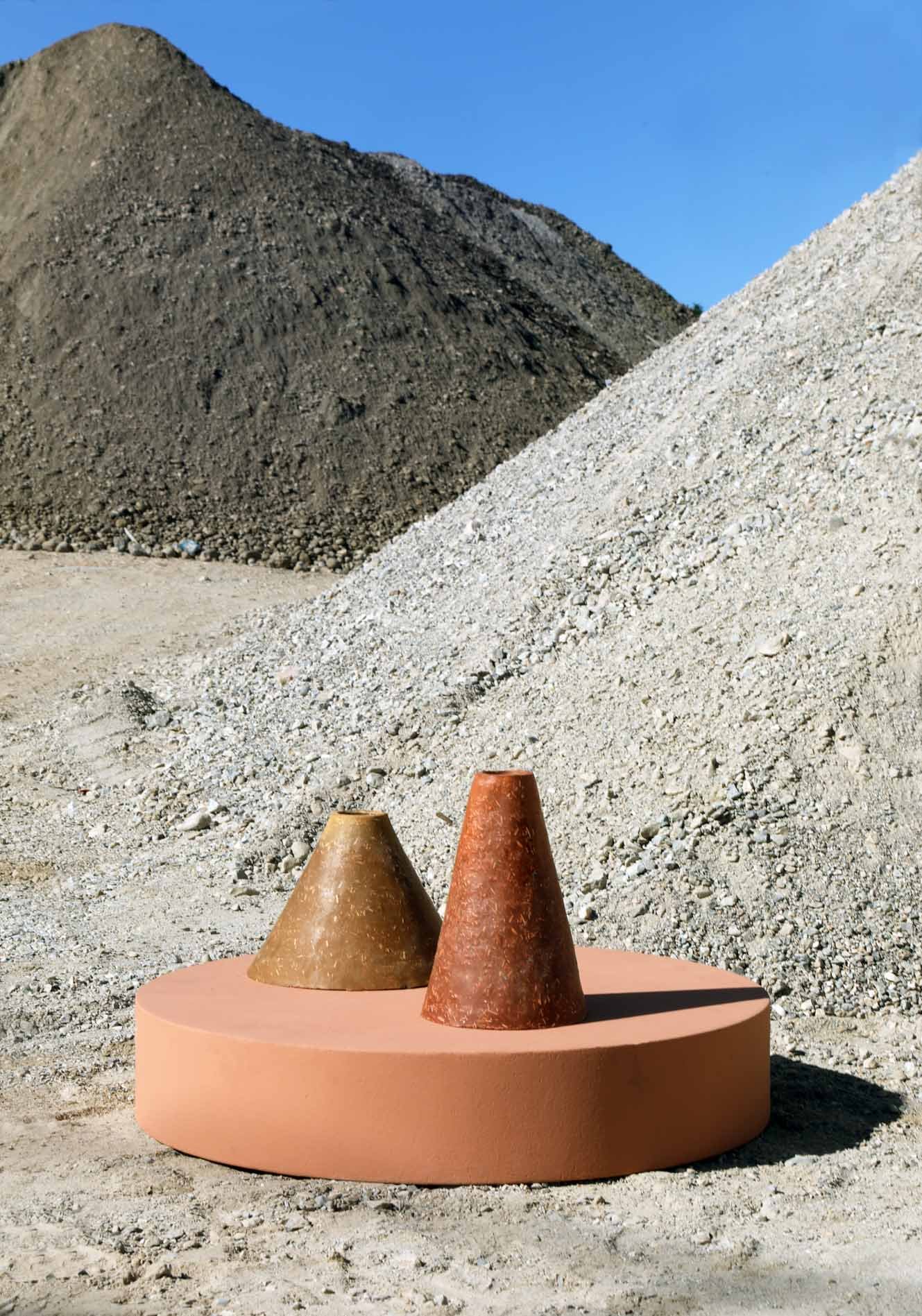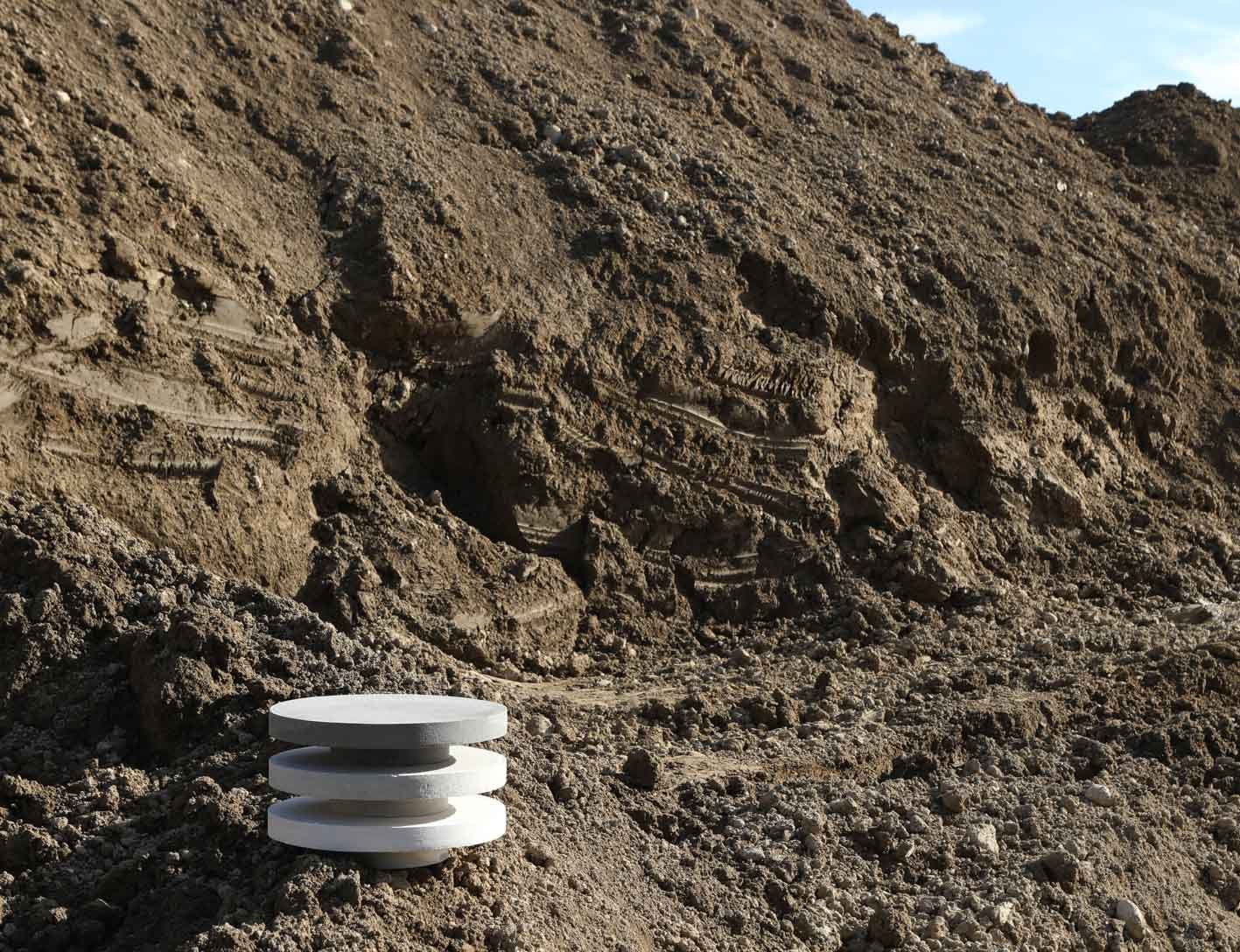.aesthetic talk
*Intentionally Made: In conversation with Domenico Orefice
with Michelle Heath
For many, the climate crisis, war and a global pandemic have all proved to be catalysts for a reassessment of values and priorities.
For many industries and crafts in the design realm, the need for products and materials that are environmentally and socially conscious is at an all-time high.
With many companies looking into their manufacturing processes, many designers are looking into the material that they work with. Both are important parts of the design process but the global pandemic has affected everyone deeply. Values have adjusted and reflect a more present and mindful community. The need for connection and emotional value is gradually becoming more important than simply the need for ‘things’. The Fashion Revolution movement has also impacted more than the fashion industry and led many to question the source and influence of their purchases. There is an undeniable shift in what actually makes something ‘valuable’.
.designer talk
Domenico Orefice
speaks with
Michelle Heath
Domenico Orefice is one of those designers who although they have always worked to create designs that are purposeful before the recent global events, now more than ever, the work he does is incredibly relevant and important. A recent conversation with Domenico Orefice to speak about his work in design brought up the phrase ‘fatto ad Arte’’ which translates to ‘intentionally made’. It is with this in mind that Orefice designs pieces that are both beautiful, functional and necessary. From stone to clay and more recently textiles, Orefice’s work is an exploration of materiality and storytelling resulting in work that is exceptional.
WHAT INSPIRES YOU IN TRADITIONAL METHODS OF CREATION?
I am inspired by what we call “well made” or as we say here in Italy “fatto ad arte” (intentionally made). Our European manufacturing history is based on this method and so it was natural for me to start from there. The project I presented at the 2018 Salone Satellite was inspired by my city Milan, the place I knew best and its artisans. One of those artisans is the Fornace Curti, a historical manufacturer of handmade terracotta vases and tiles. These friezes were built at the time of the Sforza family and Leonardo Da Vinci and still hang on the walls to this day in the city of Milan. My projects tend to start from places, stories and people as well as from my sensitivity which creates an enlarged and shared design that enriches. Beginning with history and technique, I try to understand the evolution of this type of production and determine what is the right thing to do today to make my contribution, this is what happened with the project of “Le Giare”. Terracotta amphorae was worked by hand on the lathe and by studying this technique, I was able to create a decomposed shape. To develop this characteristic form the amphora had to be shaped in several pieces and then joined together when the clay began to dry requiring great artisan skill.
HOW DO YOU DETERMINE WHO YOU WOULD LIKE TO COLLABORATE WITH? IS IT BASED ON SKILLS OR ETHICS OR BOTH?
Technical ability is certainly a basis for making great designs. Working with highly skilled artisans allows us to overcome the traditional rules of production and this not only requires great technical skill but also an open mind. More than determining who to collaborate with, for me design is a path as well as a profession. When you meet manufacturers or entrepreneurs and start collaborating together, it is because there is an elective affinity and shared values and for me, the ethical one is significant.
DO YOU PLAN TO MOVE INTO DESIGNING LARGER QUANTITIES? WOULD YOU LIKE TO TRANSITION INTO THAT IF YOU ARE ABLE TO MAINTAIN THE SAME VALUES AND RESULTS?
When you work in small series and directly with those who make the products by hand, it is certainly easier to stay in an area where ethical values and manufacturing quality go hand in hand. So the real challenge lies in a semi-industrial number if you like and this transition is already happening for me.
WHAT MORE CAN DESIGNERS DO TO HELP WITH THE CLIMATE CRISIS? WHAT ARE YOUR PERSONAL INITIATIVES FOR THE WORK YOU DO?
Today, the search for new materials and greater awareness of the entire production system is the key issue. Starting from this analysis, I aim to create an object with new content, which through its genesis and the motivations that inspire it, allows us to better understand the topic and open up a debate. In all sectors we are already starting to design a new production system, for example in Europe there are “The Circular Economy Action Plan 2020” and “The EU Strategy for Sustainable and Circular Textiles” which are part of the EU Green Deal. According to these documents, by 2030 we will have to follow new regulations and this will lead to a review of the entire supply chain in the production sectors. All this will revolutionise sectors including the fashion-textile sector. There is talk of a Digital Product Passport that will provide information on the sustainability of a product and on its ease of repair or recycling.I work a lot with companies in the stone industry, so I’m trying to develop a complete project on the exploitation of these materials that will then affect the ecosystem and local society in a positive way. So it is not just a product project but a broader study that goes into the specifics of the entire supply chain and how the material is used to make people more aware of what happens in the production. For me, the design made of stories, places and people so there must be a direct return to the context where it is purchased. I am referring to a design that gives back to the territory where it was produced and that does not just stop at the origin but tries to reach a wider audience. Thus, it becomes a project of dissemination which leaves something and is not just “one more object.”
Domenico Orefice
I Crudi
seen Paolo Belletti
HOW DID YOU MANAGE TO COLLABORATE AND FEEL INSPIRED DURING THE GLOBAL LOCKDOWNS?
The global lockdown was a significant break, even a traumatic one. It was a moment of rebirth for me where I gained a greater awareness of what I wanted to do and how to design. Before being a good designer, I want to be a man who is even more aware and who increases his experiences, then the rest will come by itself.
HAS THE PANDEMIC AFFECTED YOUR PERSPECTIVE OF DESIGN?
The pandemic has not affected my design perspective. Certainly, these unexpected events, as well as the current war, show us how our approach must change in all fields. The advent of increasingly complex realities which are changing extremely fast must lead to a company that carries out studies such as forecasts and foresight, and that projects itself into the long-term future. For this reason, as a designer, it is more important for me to follow a path that leads to new content and its dissemination, rather than putting myself at the service of production to make yet another product similar to the others. It is no longer the time for this.
WHAT ARE YOU CURRENTLY WORKING ON?
“Fables Under the covers” recently came out, which is a project that combines textiles and publishing. Designed to unite children and parents in a multi-sensory experience through the magical moment of reading fairy tales. It is a series of children’s books that combines each issue with a jacquard-knitted, illustrated plaid made by Lanificio Leo. The first two titles in the series recount two of Aesop’s Fables, “The Tortoise and the Hare” and “The Deer and the Lion.” Each book can be opened up completely to see the development of the story at a glance and can also be positioned horizontally or vertically, becoming a game. Each fable is accompanied by a version of the same story created on a mini plaid/tapestry made of merino, virgin wool also woven by Lanificio Leo. It is a soft support on which even very young children can visually follow the story told by the parent through the figures that illustrate the story while immersing themselves in a warm embrace. The plaid can accompany the child from the first months as a blanket up to childhood as a tapestry to decorate the bedroom.
What does 2022 hold for you?
2022 certainly holds new experiences and new ideas for me. If one is willing to grow and change, projects will surely follow this path too.
Domenico Orefice
Charta
seen Paolo Belletti





